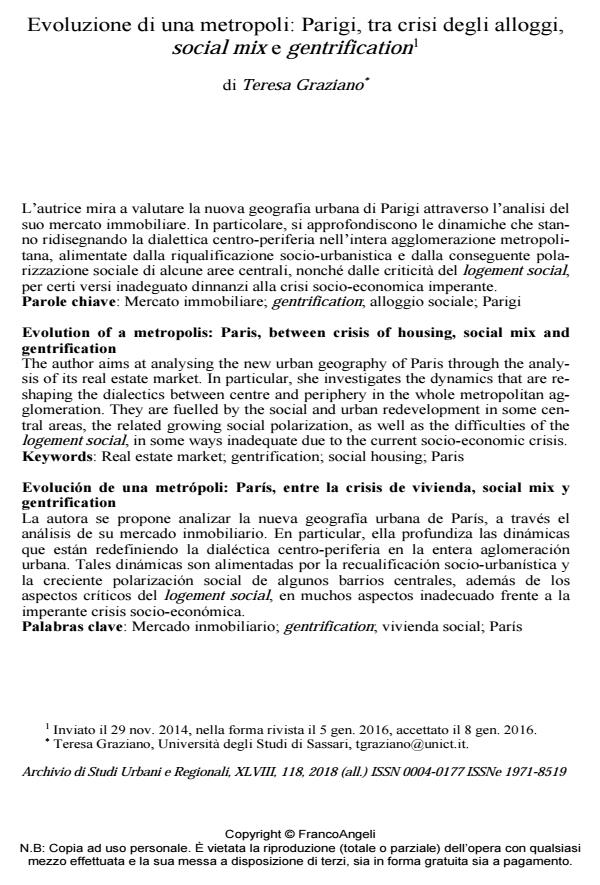Evoluzione di una metropoli: Parigi, tra crisi degli alloggi, social mix e gentrification
Titolo Rivista ARCHIVIO DI STUDI URBANI E REGIONALI
Autori/Curatori Teresa Graziano
Anno di pubblicazione 2017 Fascicolo 2017/118 suppl.
Lingua Italiano Numero pagine 22 P. 221-242 Dimensione file 837 KB
DOI 10.3280/ASUR2017-118S11
Il DOI è il codice a barre della proprietà intellettuale: per saperne di più
clicca qui
Qui sotto puoi vedere in anteprima la prima pagina di questo articolo.
Se questo articolo ti interessa, lo puoi acquistare (e scaricare in formato pdf) seguendo le facili indicazioni per acquistare il download credit. Acquista Download Credits per scaricare questo Articolo in formato PDF

FrancoAngeli è membro della Publishers International Linking Association, Inc (PILA)associazione indipendente e non profit per facilitare (attraverso i servizi tecnologici implementati da CrossRef.org) l’accesso degli studiosi ai contenuti digitali nelle pubblicazioni professionali e scientifiche
L’autrice mira a valutare la nuova geografia urbana di Parigi attraverso l’analisi del suo mercato immobiliare. In particolare, si approfondiscono le dinamiche che stanno ridisegnando la dialettica centro-periferia nell’intera agglomerazione metropolitana, alimentate dalla riqualificazione socio-urbanistica e dalla conseguente polarizzazione sociale di alcune aree centrali, nonché dalle criticità del logement social, per certi versi inadeguato dinnanzi alla crisi socio-economica imperante.
Parole chiave:Mercato immobiliare; gentrification; alloggio sociale; Parigi
Teresa Graziano, Evoluzione di una metropoli: Parigi, tra crisi degli alloggi, social mix e gentrification in "ARCHIVIO DI STUDI URBANI E REGIONALI" 118 suppl./2017, pp 221-242, DOI: 10.3280/ASUR2017-118S11